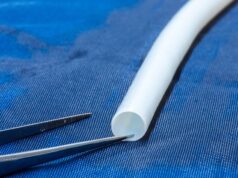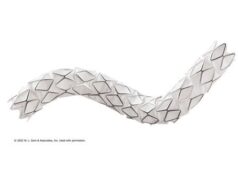The first endovascular treatment of an abdominal aortic aneurysm (EVAR) in North America was performed 20 years ago last November. Dr. Juan Parodi, Dr. Frank J. Veith, Dr. Michael L. Marin, Dr. Jacob Cynamon, and Dr. Claudio Schönholz performed the procedure on November 23, 1992.
Dr. Parodi originated the transformational surgical intervention when he performed the first EVAR 2 years earlier with Dr. Schönholz in Buenos Aires, Argentina.
Dr. Julio Palmaz, inventor of the balloon-expandable stent used in coronary arteries, and Dr. Parodi had been thinking about the use of stents and stent-grafts to treat abdominal aortic aneurysms (AAA).
Theoretical discussion translated relatively quickly to clinical reality, and by 1991, Dr. Parodi, Dr. Palmaz, and Dr. Hector Barone had published their landmark paper describing the first of several cases in which they successfully used EVAR.
These success stories galvanized the vascular group at Montefiore Medical Center in New York City, and when a perfect candidate arose for the new technique, they acted. In August 1992, a 76-year-old man who had numerous comorbidities, including severe oxygen-dependent pulmonary insufficiency, presented to Dr. Marin with a 7.5-cm painful and tender renal AAA. The patient’s comorbidities precluded open surgery. Dr. Marin consulted with Dr. Veith about other treatment options, including the possibility of the new endovascular technique.
As detailed by the participants in an historical note (Annals of Vascular Surgery 2005; 19:749-751), discussions ensued with Dr. Parodi. Dr. Marin and Dr. Veith even offered to visit Buenos Aires to observe the technique.
The procedure was planned to coincide with the November 1992 Montefiore/Einstein meeting, which Dr. Parodi planned to attend. But before this could take place, Johnson & Johnson, the company that held the Parodi and Palmaz patents, would have to approve the use of a large Palmaz stent in the United States.
The stent had not yet been approved by the Food and Drug Administration (FDA).
Dr. Parodi also requested the participation of Dr. Schönholz, an interventional radiologist with whom he routinely worked, and Dr. Barone, who was involved in assembling the various components of the EVAR system. .
Persuaded by Dr. Veith and Dr. Marin on compassionate grounds that the operation should be done, however, Johnson & Johnson agreed that Dr. Parodi could operate as long as he used his own stent setup.
The long-awaited operation was performed on November 23, 1992, by the team of Dr. Parodi, Dr. Schönholz, Dr. Veith, Dr. Marin, and Dr. Cynamon. They used a 22-mm Dacron prosthesis sewn to a large Palmaz-type stent, which was inserted via a right femoral arteriotomy. Digital fluoroscopic guidance was used, and the stent was fixed to the proximal nonaneurysmal aorta using a large balloon to expand the proximal stent.
Aneurysmal exclusion was demonstrated by a variety of imaging modalities, but perhaps more importantly, the prominent pulsation of the aneurysm was no longer present and the patient was able to be discharged a few days later with his symptoms relieved. He survived symptom-free for 9 months, and ultimately succumbed to cardiopulmonary comorbidities.
Nonetheless, EVAR had come to the United States and a revolution in vascular treatment was underway.











